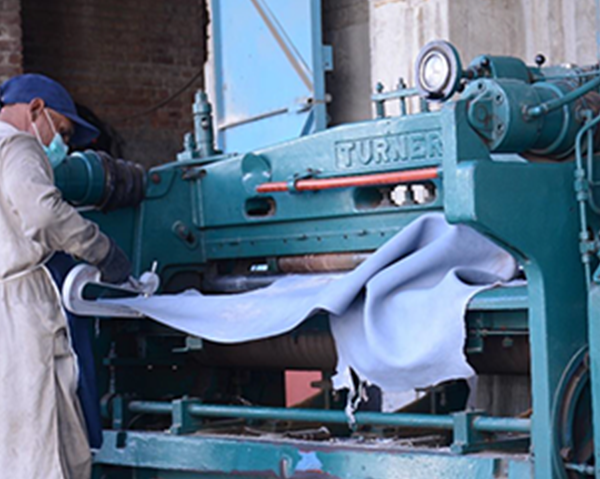Splitting is one of the key mechanical operations in Iran’s leather industry, carried out especially on thicker hides such as cowhide and buffalo hide, in order to reduce overall thickness and create uniformity across the entire surface. This process is particularly important in the production of high-quality leather goods that require accuracy and consistency in thickness.
After the sammying stage, many thick hides still retain irregularities and excessive thickness, which makes them unsuitable for certain end uses. In the splitting process, these hides are fed into a splitting machine equipped with a sharp horizontal blade that evenly divides the hide into two or more layers.
- Grain Layer: This top layer contains the natural grain and structural strength of the hide. Due to its high quality and attractive surface, it is primarily used for manufacturing premium products such as luxury handbags, top-grade leather shoes, and leather garments.
- Split Layer (or Flesh Layer): With additional finishing processes, this layer can be transformed into suede, corrected grain leather, or laminated leather, and is widely used in the production of a variety of goods.
The main objective of splitting is not merely to reduce thickness, but to achieve a uniform thickness across the entire hide, which is crucial for subsequent stages such as dyeing, finishing, and cutting. Any inconsistency in thickness can result in uneven dye absorption, unwanted stretching, or structural weaknesses in the final product. In Iranian tanneries and workshops, splitting machines are finely adjusted so that the final thickness matches precisely the requirements of the target product—whether footwear, furniture, apparel, or accessories.
This process also enhances the efficiency of raw material utilization, since both resulting layers are usable. By employing both the grain and split layers, Iranian producers are able to maximize value from a single hide, offering a diverse range of products for different markets—from luxury to industrial.
Key characteristics of the splitting process in Iran’s leather industry:
- Reduction of thick hides to a uniform, controllable thickness
- Separation into grain and split layers for diverse leather applications
- Precise thickness control according to the specifications of the final product
- Improved quality in dyeing, finishing, and cutting due to better uniformity
- Optimal use of raw materials with minimal waste


No comments yet.